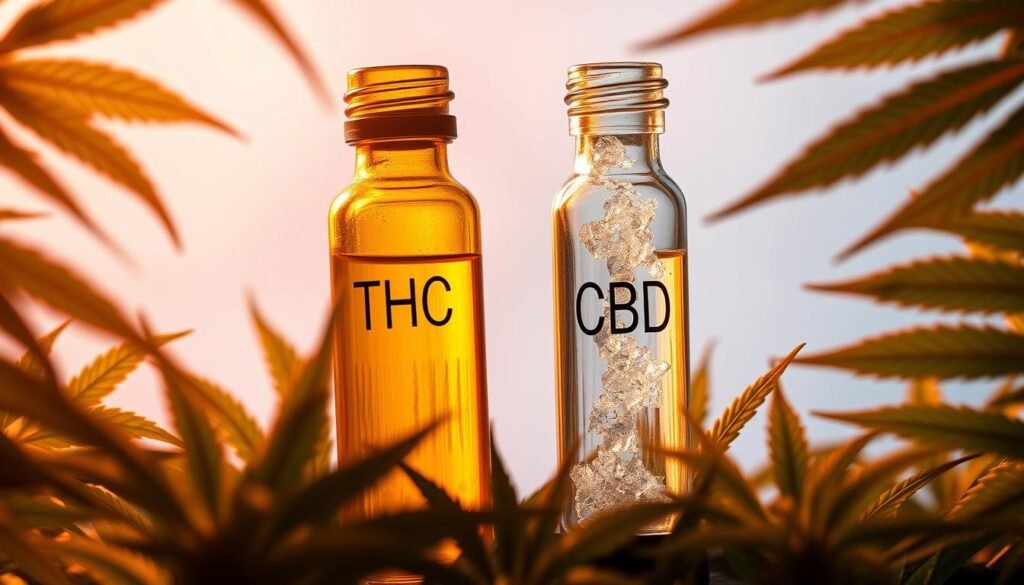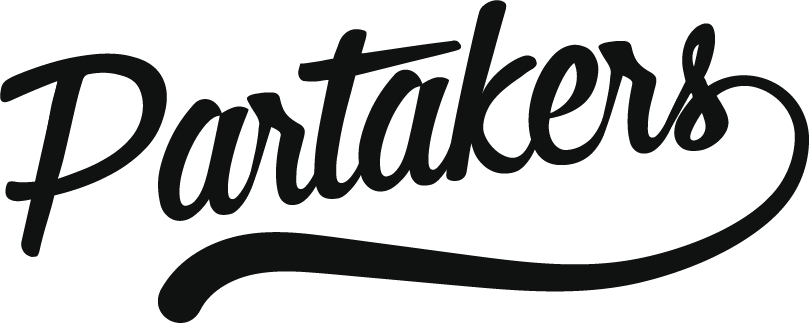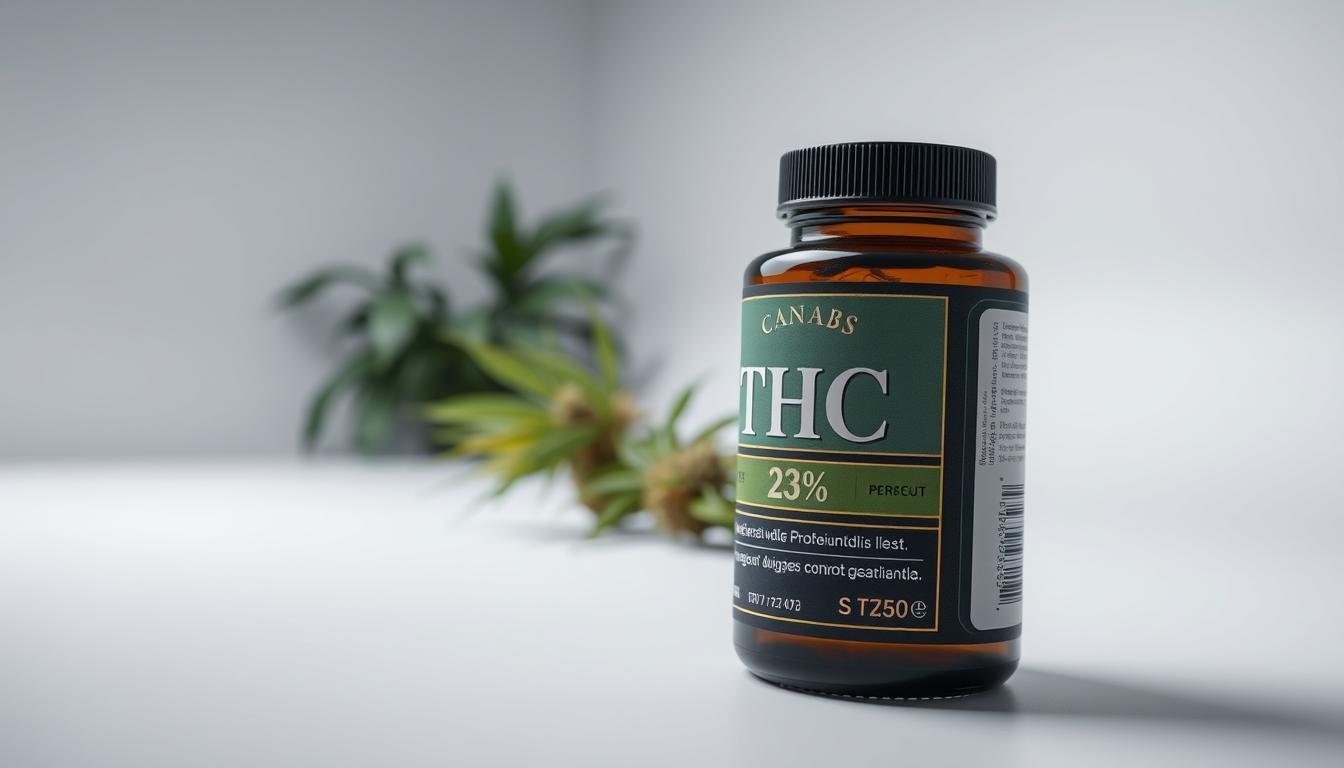Understanding cannabis labels is crucial for a safe and enjoyable experience. With the growing popularity of cannabis products, it’s essential to know how to interpret the information on the label.
For both medical and recreational users, decoding THC percentages is vital to ensure you’re getting the right product for your needs. A wrong amount of THC can lead to an uncomfortable experience.
Key Takeaways
- Understanding cannabis labels is crucial for a safe experience.
- Decoding THC percentages helps you choose the right product.
- Knowing the THC level ensures a comfortable experience.
- Cannabis labeling is essential for both medical and recreational users.
- Interpreting labels helps you make informed decisions.
1. The Basics of Cannabis Product Labels
Cannabis labels are designed to inform consumers about the contents and potency of their products. Understanding these labels is essential for making informed decisions when purchasing cannabis products.
Mandatory Information on Legal Cannabis Packaging
Legal cannabis packaging must include certain information to comply with regulations. This typically includes the product name, THC and CBD percentages, and a list of ingredients. Accurate labeling is crucial for consumer safety and compliance with the law.
The specific details required on cannabis labels can vary significantly from one state to another. For instance, some states may require warning labels about the potential risks of cannabis use, while others may demand detailed information about the cultivation process.
State-by-State Labeling Requirements
Labeling requirements for cannabis products are not uniform across the United States; they vary by state. For example, some states require cannabis products to be labeled with a universal symbol indicating that they contain THC, while others may have different symbols or no symbol at all.
| State | THC Labeling Requirement | CBD Labeling Requirement |
|---|---|---|
| California | Mandatory | Recommended |
| Colorado | Mandatory | Mandatory |
| Oregon | Mandatory | Not Required |
The Difference Between Medical and Recreational Labels
Medical and recreational cannabis products often have different labeling requirements. Medical cannabis labels may include information about the product’s intended use, dosage recommendations, and potential interactions with other medications. Recreational labels, on the other hand, may focus more on the product’s THC content and warnings about its psychoactive effects.
By understanding the differences between medical and recreational cannabis labels, consumers can make more informed choices about their cannabis use.
2. Understanding THC vs CBD: The Key Compounds
Understanding the difference between THC and CBD is crucial for choosing the right cannabis product. These two compounds have distinct effects on the body, making it essential to know their properties.
THC: Psychoactive Properties and Effects
THC (Tetrahydrocannabinol) is the psychoactive compound in cannabis, responsible for the “high” effect. It binds to cannabinoid receptors in the brain, influencing mood, perception, and cognitive function. THC is often used for its euphoric effects and pain relief.
CBD: Therapeutic Benefits Without the High
CBD (Cannabidiol) is non-psychoactive and offers various therapeutic benefits without the euphoric effect. It’s used for anxiety, inflammation, and pain management. CBD’s therapeutic properties make it a popular choice for those seeking relief without psychoactive effects.
Balanced Ratios: What 1:1, 2:1, and Other Formulations Mean
Cannabis products often come with specific THC:CBD ratios, such as 1:1 or 2:1. These ratios indicate the balance between the psychoactive and non-psychoactive compounds.
How Different Ratios Affect Your Experience
The ratio of THC to CBD can significantly impact your experience. For instance, a 1:1 ratio provides equal parts of THC and CBD, offering balanced effects. A higher THC ratio may produce more psychoactive effects, while a higher CBD ratio may offer more therapeutic benefits without the high.
| THC:CBD Ratio | Effects |
|---|---|
| 1:1 | Balanced effects, moderate psychoactivity |
| 2:1 | More psychoactive effects, some therapeutic benefits |
| 1:2 | More therapeutic benefits, less psychoactivity |

By understanding THC and CBD, consumers can make informed decisions about their cannabis use, choosing products that best suit their needs.
3. Deciphering Potency: What Those Percentages Really Mean
Understanding cannabis potency is crucial for choosing the right cannabis products. The percentages on cannabis labels represent the concentration of THC or CBD in a product. A higher percentage indicates a more potent product.
When selecting a cannabis product, consider your tolerance and the desired effect. For beginners, a lower THC percentage (around 5-10%) is recommended, while experienced users may prefer higher concentrations (20-30%). A weed potency guide can help navigate these choices.
Cannabis labels provide valuable information about the product’s composition. By understanding what these labels mean, you can make informed decisions about your cannabis use. Whether you’re seeking medical relief or recreational enjoyment, deciphering cannabis labels is key to a satisfying experience.
FAQ
What information is typically included on cannabis labels?
Cannabis labels usually include information such as THC and CBD percentages, product weight, batch number, and warnings. Labels may also indicate whether the product is for medical or recreational use.
How do I know if a cannabis product is high in THC or CBD?
Check the label for the THC and CBD percentages. THC is usually listed as “Tetrahydrocannabinol” or “THC,” while CBD is listed as “Cannabidiol” or “CBD.” A higher percentage indicates a stronger product.
What is the difference between THC and CBD?
THC is the psychoactive compound in cannabis, producing a “high” effect, while CBD is non-psychoactive and offers therapeutic benefits without the high. The ratio of THC to CBD can significantly impact the user’s experience.
How do I choose the right THC:CBD ratio for my needs?
Consider your desired outcome: for a more therapeutic experience without the high, look for products with higher CBD and lower THC. For a more recreational experience, products with higher THC may be preferred. Start with a low dose and adjust as needed.
What do 1:1, 2:1, and other THC:CBD ratios mean?
These ratios indicate the proportion of THC to CBD in the product. A 1:1 ratio means equal parts THC and CBD, while a 2:1 ratio means twice as much THC as CBD. The right ratio for you will depend on your individual needs and preferences.
How do I decipher the potency of a cannabis product?
Potency is usually indicated by the THC percentage on the label. A higher percentage means a more potent product. Consider your tolerance and experience level when choosing a product.
Are there different labeling requirements for medical and recreational cannabis?
Yes, labeling requirements can vary between medical and recreational cannabis products, and may also differ by state. Medical labels may include additional information such as dosing instructions and potential interactions with other medications.

